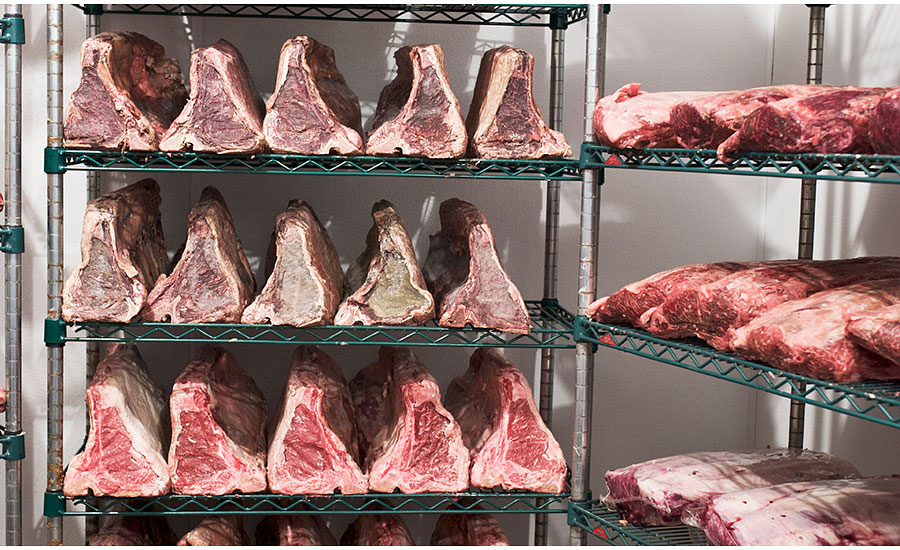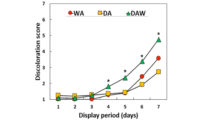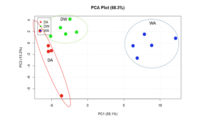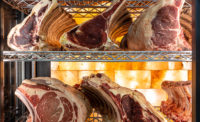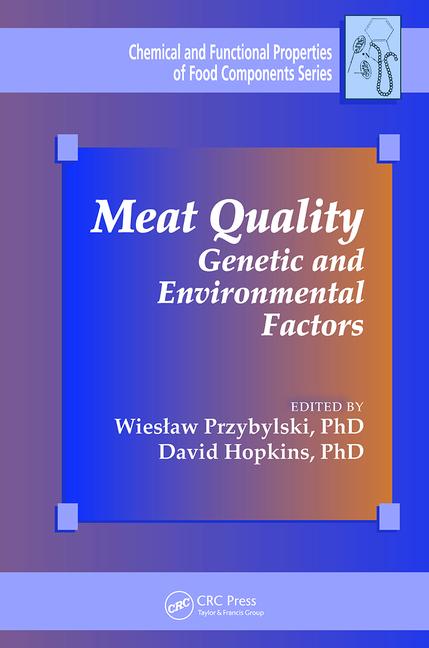Dry-aging is a traditional butchery process to store whole carcasses or unpackaged primals or sub-primals under a controlled environment for a certain period of time. Despite the fact dry-aging is a costly process because of decreased yields and greater weight losses during aging and trimming, it has been widely practiced in many local meat processors, high-end restaurants and gourmet markets. This is mainly due to its known positive effects on enhancing beef palatability attributes, particularly generating unique flavor characteristics, such as brown-roasted beefy/brothy, buttery, nutty/roasted nut, and/or sweet flavor.
But several published studies actually found no significant impact of dry-aging on eating quality attributes of beef. The primary reason for this inconsistent result could be because of the improper/uncontrolled processing condition applied for dry-aging. In fact, the optimal dry-aging regimes compiling the essential processing environment components have not been clearly established. Therefore, in our study we compared various essential dry-aging factors (temperature, humidity and air-flow) and their subsequent effects on meat quality attributes of beef loins. Further, using a novel metabolomics approach, we investigated the metabolites differences of dry-aged and wet-aged beef, with particular emphasis on flavour precursors.
A total of 30 beef short loins (bone-in) from 15 beef carcasses were obtained at two days postmortem. Each loin was cut in half, yielding 60 sub-sections. A total of six treatments, including four dry-aging regimes (2 aging temperature (1 or 3°C) x 2 air-flow rates (0.2 m/s or 0.5 m/s), and two wet-aging control groups (1 or 3°C) were randomly assigned to the six sections and aging was carried out for three weeks in controlled dry-aging testing cabinets. The given 2 x 2 (temperature x air-flow) combinations resulted in various RH regimes, such as 76 percent (at 1°C and 0.2 m/s), 73 percent (at 1°C and 0.5 m/s), 49 percent (at 3°C and 0.2 m/s), and 55 percent (at 3°C and 0.5 m/s).
The sensory panel determined the dry-aged loins had better flavor and overall likability compared with the wet-aged loins, but no differences in tenderness or juiciness. While there was no significant interaction between aging type and aging regime, loins aged at 3°C with 0.2 m/s (air-flow) and 49 percent RH yielded the highest numerical values in overall likability, flavor, juiciness and tenderness compared with other treatments. We found that eight of the 32 predominant metabolites detected were statistically different between aging treatments. Among those, tryptophan, phenylalanine, valine, tyrosine, glutamate, isoleucine and leucine were significantly more abundant in the dry-aged beef samples than in the wet-aged samples, whereas inosine monophosphate was more abundant in the wet-aged group.
This result suggests that dry-aging could be further optimized through identifying the best dry-aging regimes to provide premium quality beef products to consumers in a consistent manner. NP
